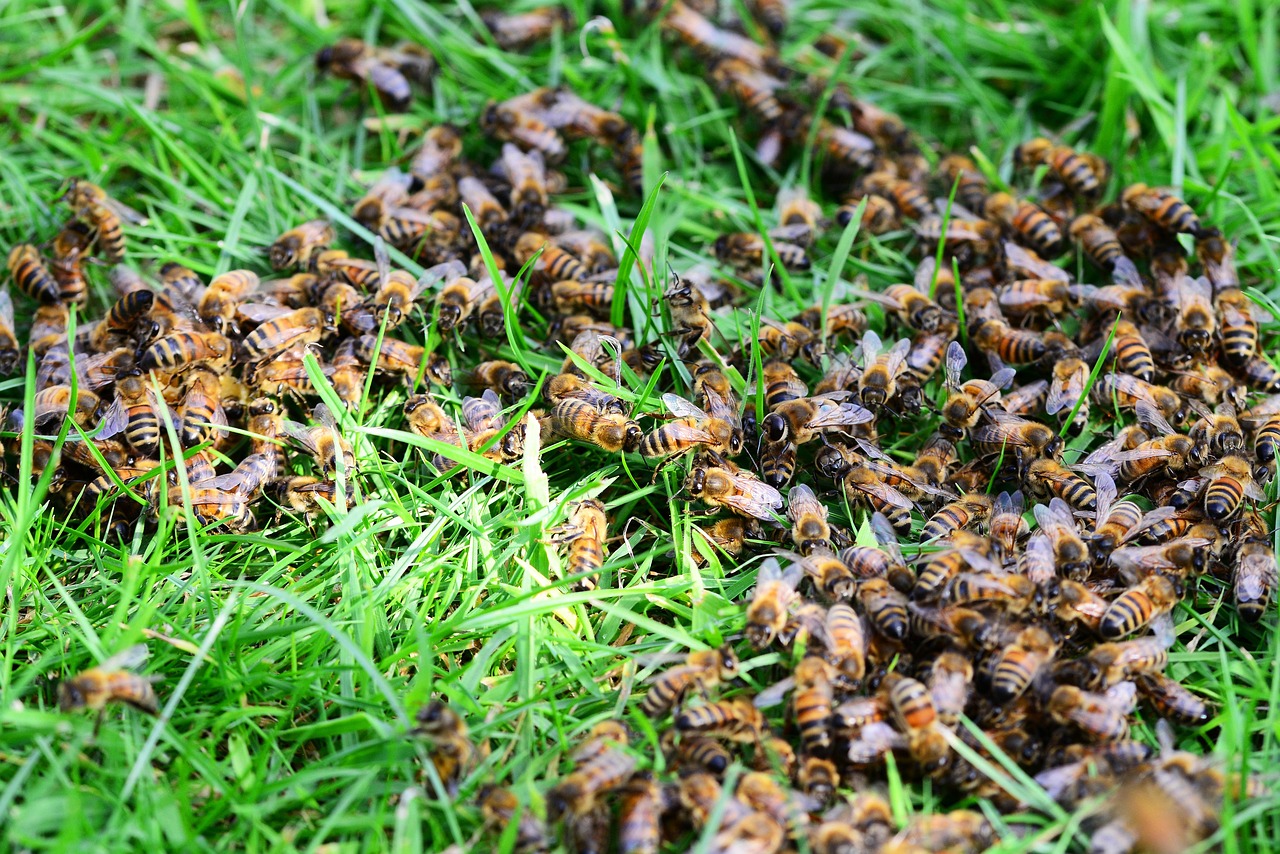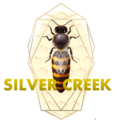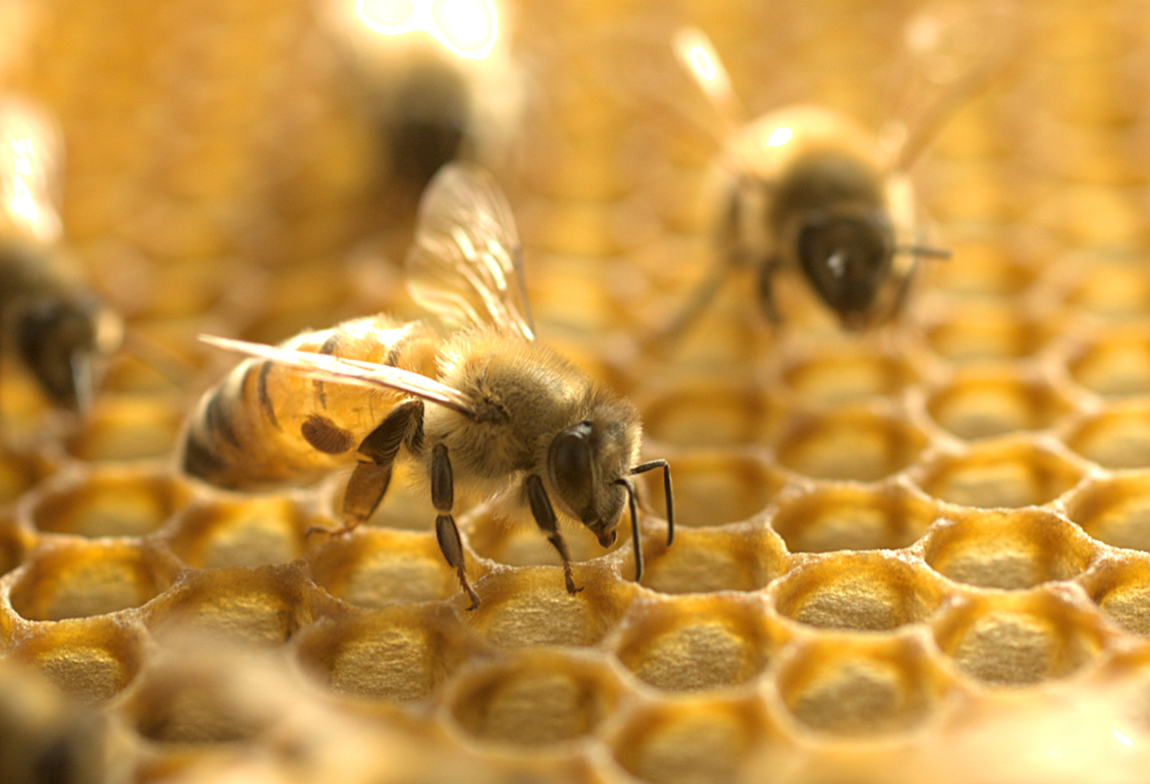
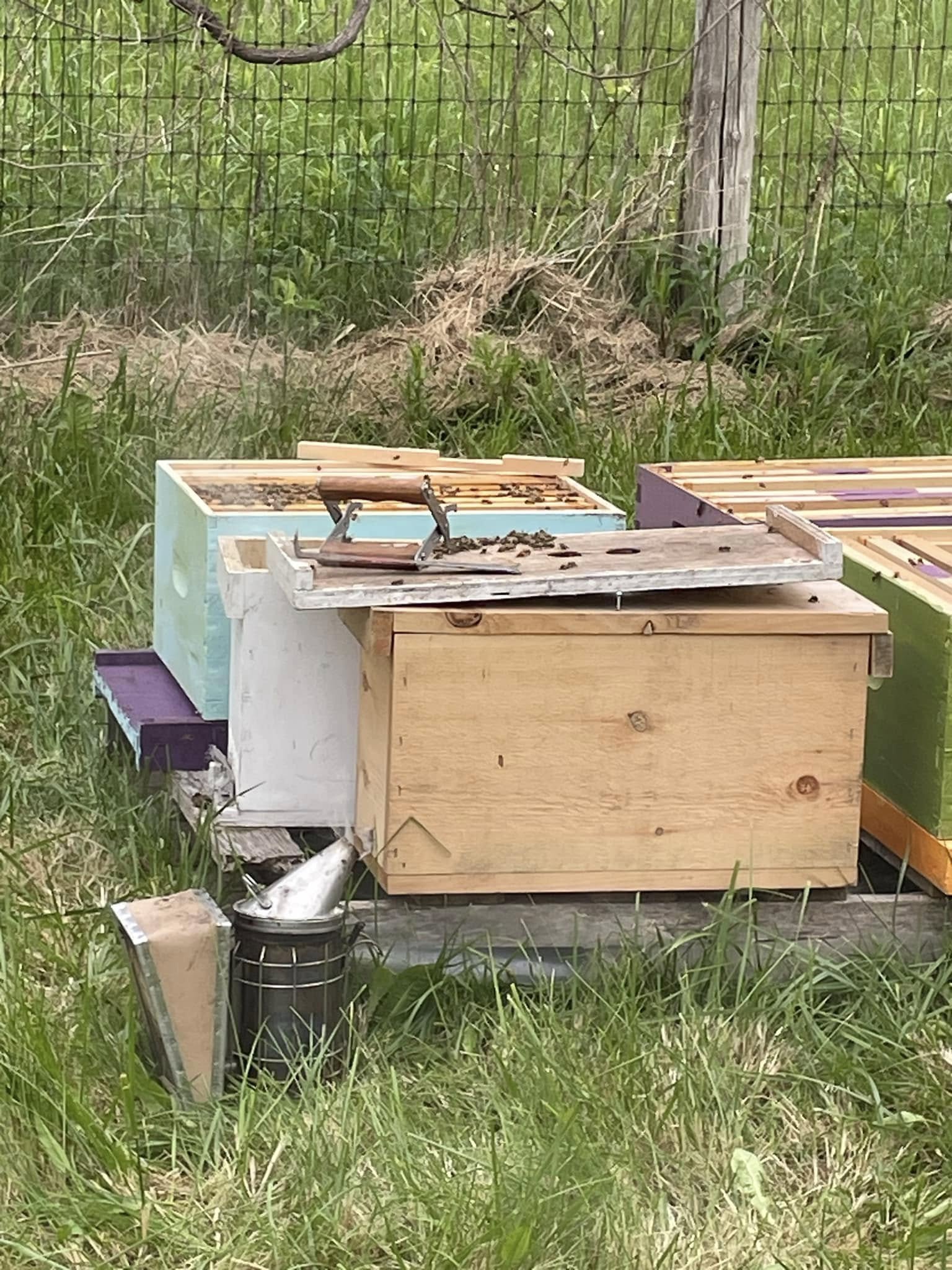
Most beekeepers anxiously await the success of their bees overwintering. How many of my bees survived? How are the colonies building up? Will they have a bumper crop of honey?
What fewer beekeepers know is that their overwintering success actually started 9 – 10 months ago. We found that part of the reason we struggled the first five years as beekeepers was because we started our yearly calendar in March, not August.
Just rearranging my excel sheet to show August as the first month in the bee yard was a real eye opener. My spring months were full of notes, tasks, etc. My August was practically blank. It was my ‘month off.’
Instead, August became the month we ramped up:
- Fed 1:1.25 to 1:1.50 sugar water to stimulate brood production
- Added pollen to make sure there was enough royal Jelly.
- I should have treated for mites heavily in July to have a zero-mite count in August.
- Broke down weak hives and used them to build up to make strong hives.
Before you argue, the yard we did this in had a 97% success rate the next year. Not only that, when I had perfected my bee calendar for the year, the method replicated the same success rate.
The control yard had a typical 50% success rate. As of 2025 we will no longer have a control yard.
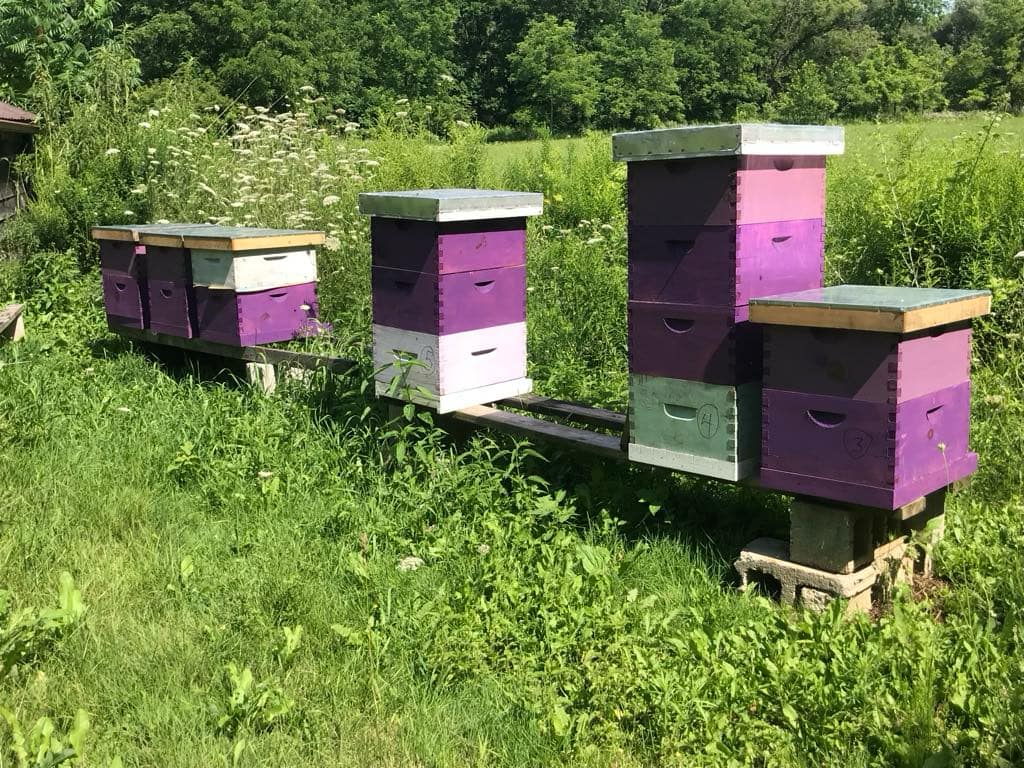
Reduce Entrances
In August we cover entrances the best we can. We put wire mesh over the entrances so the bees can enter and exit, but it is easier for them to defend.
We do not invest a lot in hive entrance reducers. We just staple wire mesh over the entrance, leaving a small hole on either side. The bees inside can move in and out as they please, but those intent on robbing will be stopped by the guard bees at the entrance.
Robbing – Mite Bomb
August has a dearth (no flowers-no nectar) in our area. This increases robbing. Bees looking to collect food for their hive turn to weaker colonies and liberate the new found honey stores as their own.
This leaves the weaker hive without critical resources. It also creates ‘mite bombs’ which refers to the robbing bees leaving mites behind that infiltrate and infest the smaller colony.
If you look at robbing and mite bombs as a summer problem that the bees will overcome, without realizing that these are the things that will damage your overwinter success rate, then you’ve ‘shot yourself in the foot.’
Beekeeping is fluid, and people have succeeded without ever paying attention to the importance of beekeeping in August. For us though, we did not see a turn around in our success until we started to focus on that oh so critical, 8th month on the calendar!
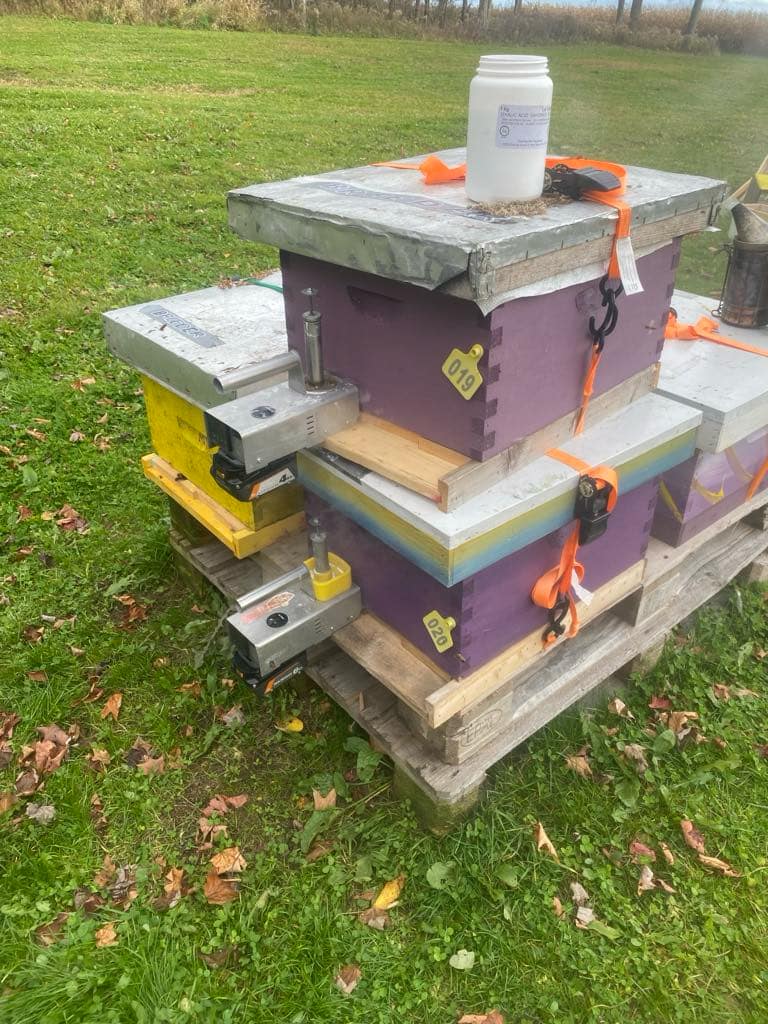
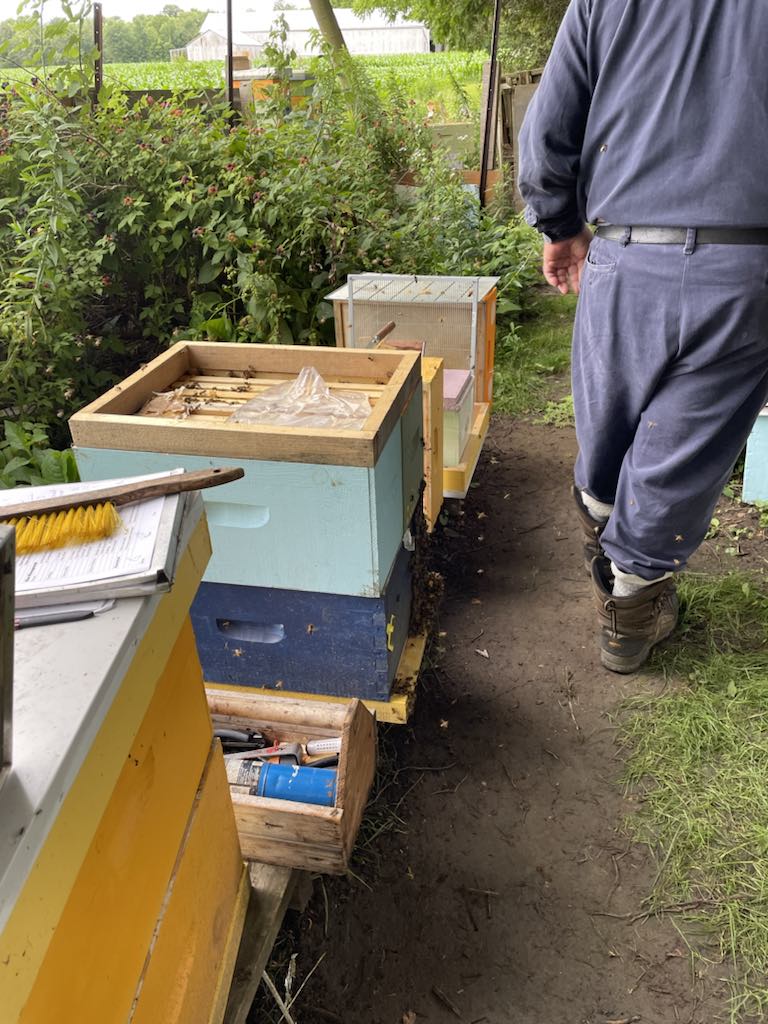
Combine Hives
This is also a good time to combine smaller weaker hives.
Two or three small hives are easier to rob out, whereas one larger hive is stronger and much more able to defend itself.
We have very little problem combining hives since learning Eugene Roman’s method. Basically, if you combine two hives then they may fight. If you combine three hives they will be confused and ‘work it out’, especially if you spray the tops of the frames with lavender water. (1 spray bottle of water, 20 drops of lavender water.)
Also, the days are going to shorten, and the nights will become cooler. If your queen is going to build up a lot of brood to overwinter the hive, and avoid being pinched, then you need enough bees to keep the new brood warm.
Feeding
In the dearth there is no food. Yet, this is when your queen needs to be laying the nurse bees that will take care of your winter bees.
For her to do this, she needs food and she needs pollen. In August both are hard for the bees to find, and she needs lots of it!
Although there are probably a dozen methods of feeding in the fall, I will share our method.
August and the first 2 weeks of September
- 1:1.25 sugar water. (we use white sugar, not beet sugar)
- Pollen Patty with 10% fresh frozen pollen (that we add), pressed into the bottom side of the patty. The side where the nurse bees are.
- Probiotics and Prebiotics applied at the end of the month.
September week 3 and week 4
- Look in the hive. We want them to build up to 8-9 frames of honey. If they are not building up honey then we feed 1:1 sugar and water. A 1:1 mixture will encourage the bees to pack it away.
- Replace the pollen patty if it has been eaten up. If you have hive beetles you may want to put a ½ patty in.
- We leave feed shims on the hive for the bees to fill out. We find that our hives that end winter the strongest, overwintered in the shim. This may be because the shim allows the bees to build out comb naturally.
October
- In most areas it is too late to feed sugar water. The bees will not have enough time to dry it out. If you keep feeding, the honey may ferment, and the bees may get dysentery.
- If we have hives that have not built up we will feed soft fondant to help them keep building up stores.
October 30
- Add 1 full fondant patty.
- Lay a sheet of paper on the top frames, slash the paper, and spray it lightly with water. Put 2 – 5lb of sugar on the paper. The bees cannot eat dry sugar. The sugar will absorb water and the bees can eat it late spring.
- Wrap the hive for Winter.
February 25
- The bees have been flying for about two weeks, if it is warm.
- Open the hive, add another fondant patty,
- If the sugar is gone we will add more clumped/damp sugar
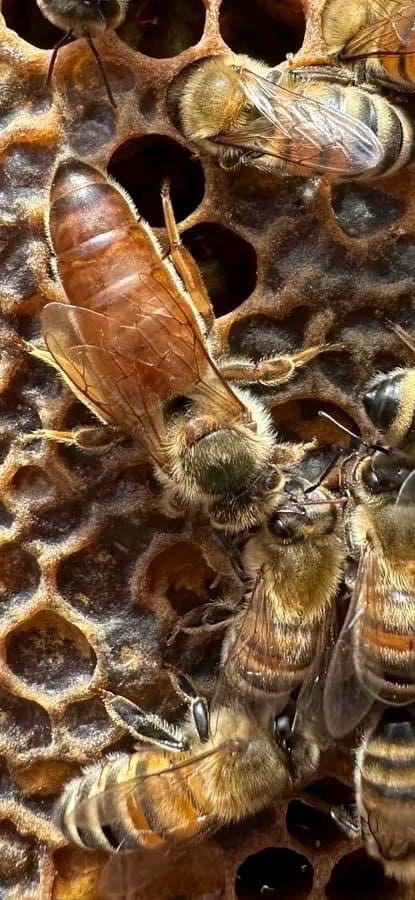
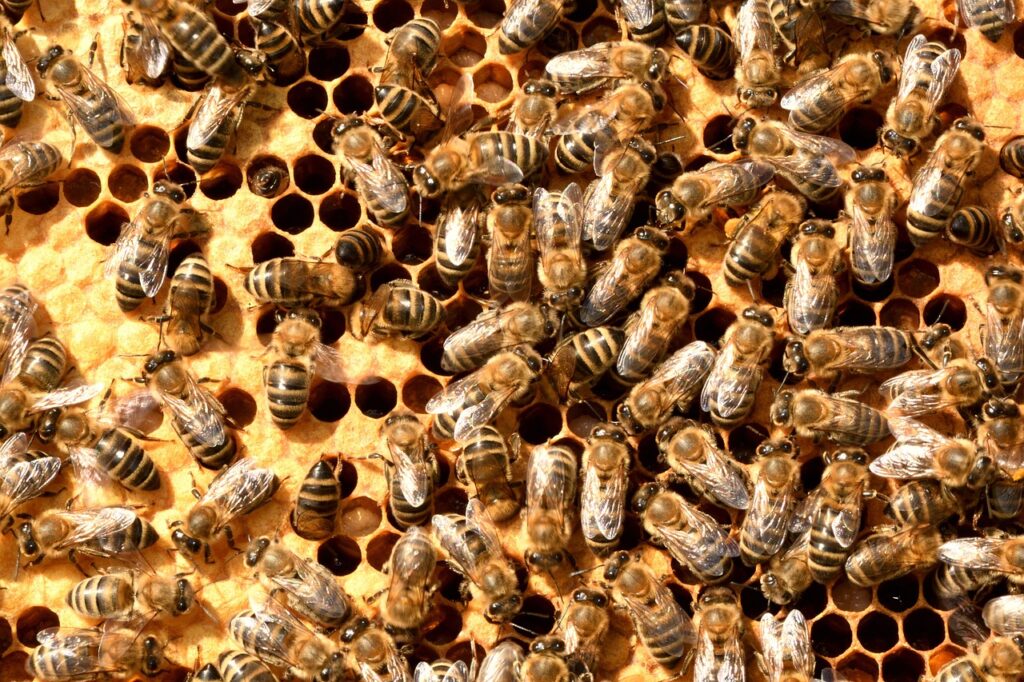
March 5
- It’s six weeks before the spring flow in our area and is time to add pollen patties. But, only add pollen in the hives that are strong. If there are not enough bees to warm the hive, then aggressively building up your population when it is still cold at night can be detrimental to the success of your brood. (to find the date for your area, watch for flowers in your area, and then count back six weeks.)
- Add fondant if the bees need it. We do not use candy board because we find the bees will eat soft fondant faster.
- We start feeding Pro biotics at the end of March
April
If your beehive is building up fast, then you want to put another box on. Put the new box on the bottom. If you put the box on the top then the heat will rise, and the brood will chill. This ‘shock’ will kill your hive.
- Do not feed syrup until the weather is above freezing at night, most of the time.
- Feed 1: 1.25 to stimulate building out comb and brood.
- Only feed inside of the hive so the bees keep the syrup warm. Never feed bees cold syrup.
- We feed pollen patties with pollen rubbed into it.
- No Pollen = No Brood = No Bees.
May
This is when you want your hive built up and thinking of swarming. We prevent swarming by splitting, or doing Demaree splits. But, we will only do Demaree splits if the weather is warm enough.
We do not unwrap until May 15.
The flow is on. The bees are building up both brood and honey stores. We will not feed syrup again until after we pull the honey supers off.
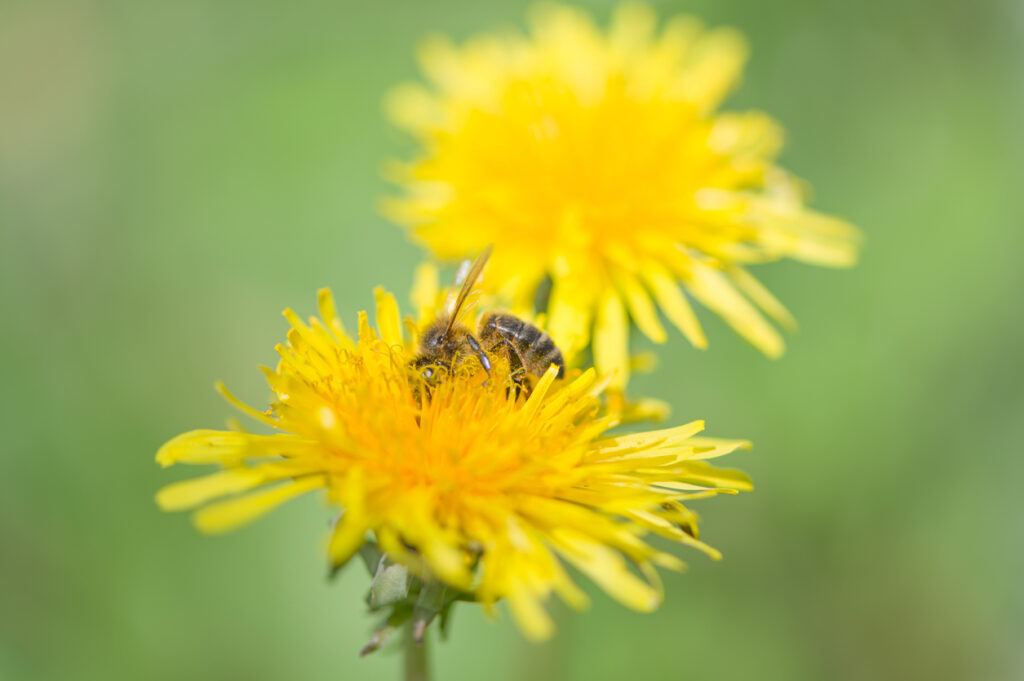
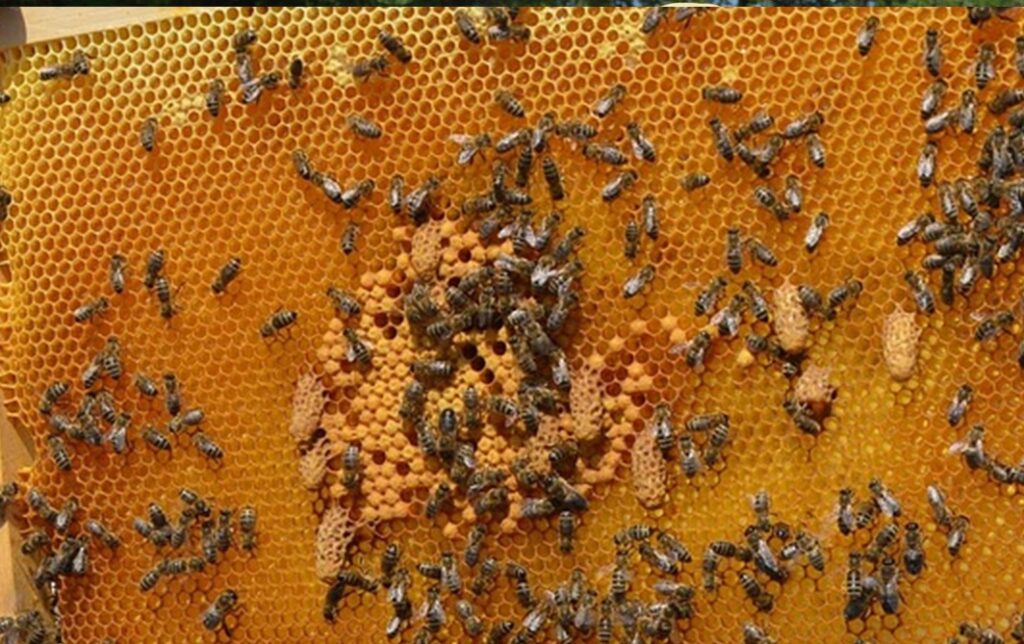
Which Queen to Pinch
Remember that we start boosting for brood in August. If one hive has no brood, then we do not want that queen. If we did not build up the hives then we wouldn’t know if the queen was laying, but the workers were cannibalizing the eggs.
Swarming can weaken a good hive. We might not pinch this queen but put it in a nuc with a very small hole in it. Another trick is to make a little tunnel so that the hive bees crawl up the chute to exit and enter. The screen entrance is 1-2” from the hive entrance. The robber bees will try to enter at the hive entrance.
The honey production of that hive is the next thing to measure. If the queen didn’t produce a lot of honey, and her hive didn’t swarm, then you may want to end her genetic line.
There are always those Queens that you want to keep for some reason or another. The queen may have exceptional genetics or had a great mother. In this case, move that hive into a nuc box and let her work there. Worse case scenario you can pinch her later or she may thrive in the confines of a nuc box
Post tags :
Share :
Latest Post

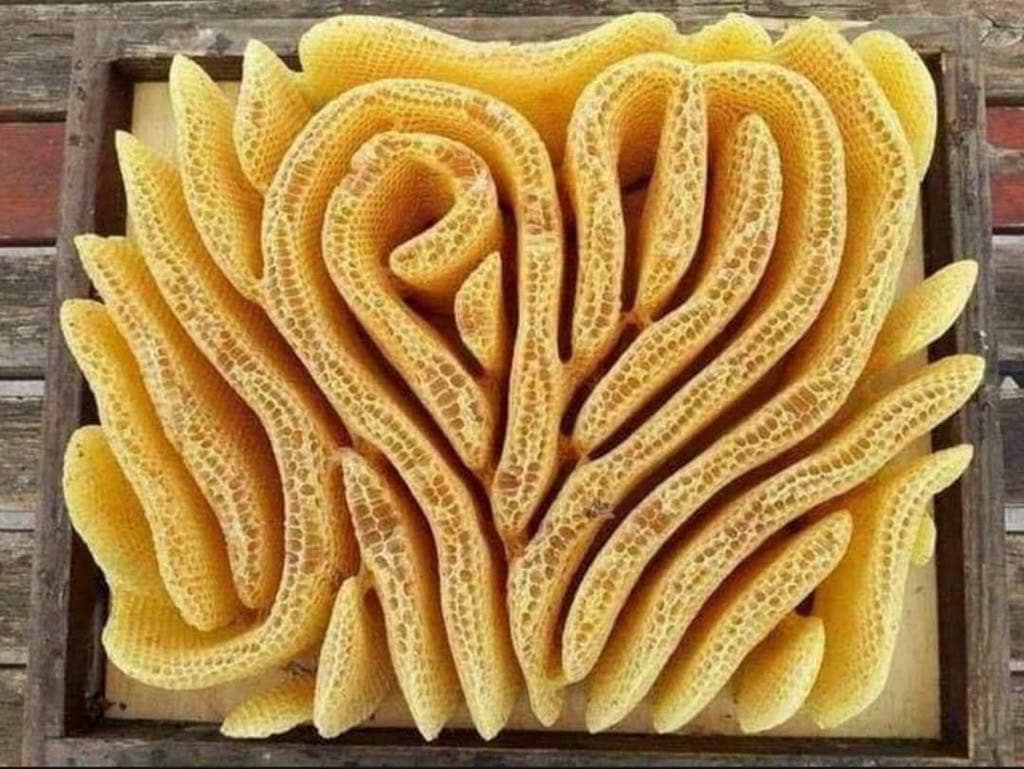
A Discussion About Taking The Blinders Off in Beekeeping

When To Pinch a Queen
